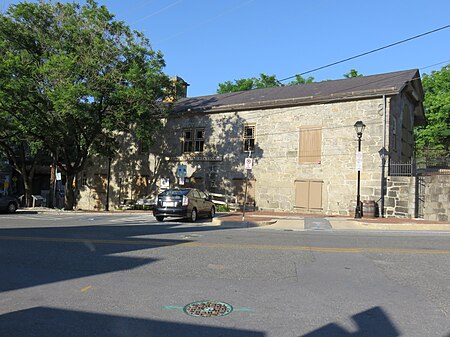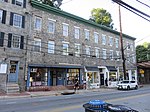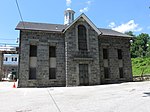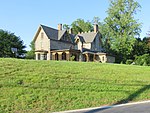Ellicott City station
1830 establishments in MarylandBuildings and structures in Ellicott City, MarylandFormer Baltimore and Ohio Railroad stationsFormer railway stations in MarylandHistoric American Engineering Record in Maryland ... and 12 more
History of rail transportation in the United StatesHoward County, Maryland landmarksInternal link templates linking to redirectsMuseums in Howard County, MarylandNational Historic Landmarks in MarylandNational Register of Historic Places in Howard County, MarylandRailroad-related National Historic LandmarksRailroad museums in MarylandRailway stations in the United States opened in 1830Railway stations on the National Register of Historic Places in MarylandTransportation buildings and structures in Howard County, MarylandUse mdy dates from August 2023

The Baltimore and Ohio Ellicott City Station Museum in Ellicott City, Maryland, is the oldest remaining passenger railway station in the United States, and one of the oldest in the world. It was built in 1830 as the terminus of the Baltimore and Ohio Railroad line from Baltimore to the town then called Ellicott's Mills, and a facility to service steam locomotives at the end of the 13-mile (21 km) run. The station, a National Historic Landmark, is now used as a museum.
Excerpt from the Wikipedia article Ellicott City station (License: CC BY-SA 3.0, Authors, Images).Ellicott City station
Maryland Avenue,
Geographical coordinates (GPS) Address Nearby Places Show on map
Geographical coordinates (GPS)
| Latitude | Longitude |
|---|---|
| N 39.267222222222 ° | E -76.795277777778 ° |
Address
Antique Depot
Maryland Avenue 3720
21043
Maryland, United States
Open on Google Maps








